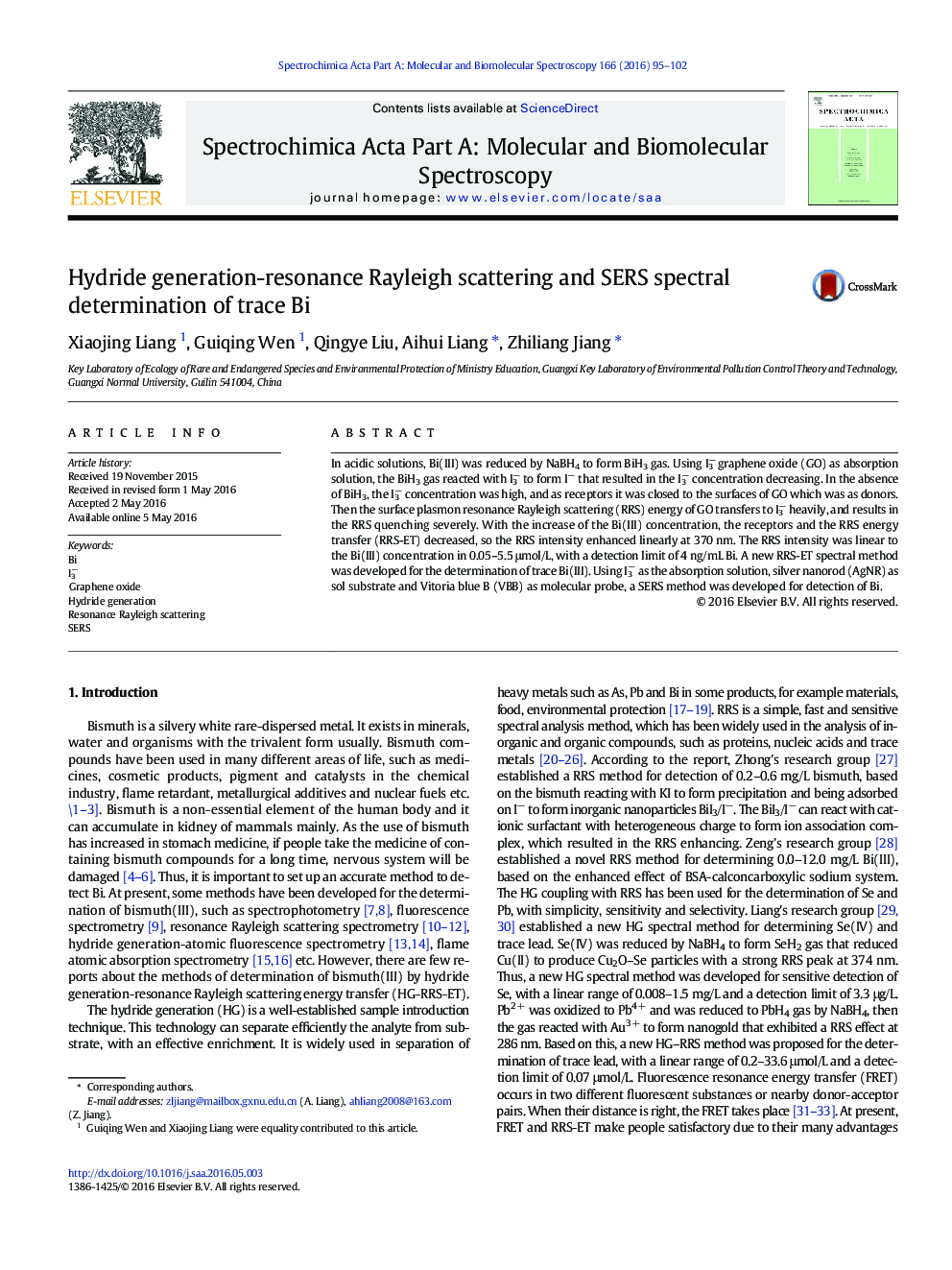| کد مقاله | کد نشریه | سال انتشار | مقاله انگلیسی | نسخه تمام متن |
|---|---|---|---|---|
| 1230653 | 1495203 | 2016 | 8 صفحه PDF | دانلود رایگان |

• NaBH4 reduce Bi(III) to produce BiH3.
• BiH3 reacted with I3− to form I−.
• The RRS peak intensity is linear with Bi(III) concentration.
• The method is simple, selective and sensitive.
In acidic solutions, Bi(III) was reduced by NaBH4 to form BiH3 gas. Using I3− graphene oxide (GO) as absorption solution, the BiH3 gas reacted with I3− to form I− that resulted in the I3− concentration decreasing. In the absence of BiH3, the I3− concentration was high, and as receptors it was closed to the surfaces of GO which was as donors. Then the surface plasmon resonance Rayleigh scattering (RRS) energy of GO transfers to I3− heavily, and results in the RRS quenching severely. With the increase of the Bi(III) concentration, the receptors and the RRS energy transfer (RRS-ET) decreased, so the RRS intensity enhanced linearly at 370 nm. The RRS intensity was linear to the Bi(III) concentration in 0.05–5.5 μmol/L, with a detection limit of 4 ng/mL Bi. A new RRS-ET spectral method was developed for the determination of trace Bi(III). Using I3− as the absorption solution, silver nanorod (AgNR) as sol substrate and Vitoria blue B (VBB) as molecular probe, a SERS method was developed for detection of Bi.
The RRS peak intensity at 370 nm was linear with Bi(III) concentration in the range of 0.5–5 μmol/L.Figure optionsDownload as PowerPoint slide
Journal: Spectrochimica Acta Part A: Molecular and Biomolecular Spectroscopy - Volume 166, 5 September 2016, Pages 95–102